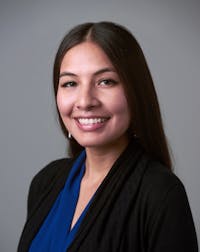Webinar recap: Community-based conservation of Amazonian megafauna
Each Wednesday, One Earth will be featuring a webinar recap from organizations and scientists around the world that focus on important topics such as biodiversity, conservation, food justice, and the intersections of environmental and human health.
This year’s Global Biodiversity Festival featured 65 events with scientists, explorers, conservationists, policymakers and more from over 20 countries. This was broadcasted live for over 30 hours! One webinar we are focusing on is the community-based conservation in the Amazon with Joao Vitor Campos-Silva. Joao has worked in the Brazilian Amazon rainforest for 12 years with participatory conservation. He shares with the audience two stories of hope for conservation and the future of Amazonian megafauna.
Joao states that there are around 40,000 plant species, 2.5 million insect species, 2,200 fish species, and 420 mammal species residing in the Amazon rainforest alone! While looking over these facts he reminds the audience that it is impossible to think of the conservation of this biodiverse land without looking at the people who reside in the rainforest. He says conservationists need new pathways where all biodiversity of plants, animals, and humans can align. There are currently various threats facing the Amazon including mining, dam construction, defaunation, and overexploitation. Protected areas are a big way to conserve these areas, but Joao says there are problems such as lack of implementation due to shortages of funding and human research. He thinks empowering local communities to take care of the environment is an effective way to prevent over exploitation and has some data to prove his theory! Along with the conservation of megafauna and flora, it is also the best way to maintain and conserve local livelihood.
Empowering local communities to take care of the environment could be effective to prevent overexploitation of the surrounding megafauna. Joao suggests that conservation is the best strategy to maintain and conserve the livelihood of local communities. He brings up a conservation project focused on the Arapaima gigas, the largest freshwater scaled fish on Earth, that is important both culturally and ecologically but threatened with extinction due to overfishing. Local populations in close partnership with researches from Mamirauá Sustainable Development Reserve created a community-based management plan for the arapaima. They created spatial zoning of the river including open access lakes where commercial fishing is allowed, subsistence lakes where local communities can fish, and protected lakes where fisheries were not allowed to fish. The conservation outputs of this project led to 304 arapaima in protected lakes as opposed to around 9 arapaima in unprotected lakes. In the subsistence lakes there were around 34 arapaima recorded showing that there was population recovery both inside and outside the protected areas. Setting up protected areas to help the population of arapaima grow also helped protected megafauna such as turtles and caiman in the area. The protected lakes worked like a bank account, creating access to food and economic security for the communities. Income was also generated for women in these communities further building a local social security net. A similar community-based management program protecting giant river turtles (Podocnemis expansa) led to the number of turtles nests being 58 times higher on protected beaches versus unprotected beaches.
Joao believes the inclusion of local people in conservation is a clear way to strengthen the conservation of the Amazon as a whole while improving their livelihood.



